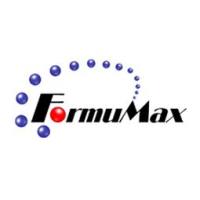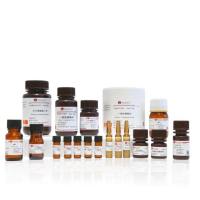Cationic liposome/micelle-based systems have come closer to providing clinically effective gene delivery than any other chemical nonviral delivery systems to date. These systems are formed from either a single synthetic cationic amphiphile (known as a cytofectin;
cyto for cell and
fectin for transfection [i.e., gene delivery and expression]) or, more commonly, from the combination of a cytofectin and a neutral lipid such as dioleoyl
l -α-phosphatidylethanolamine (DOPE) or cholesterol (Chol) (
see Fig. 1 ). There are at least 40 cationic liposome/micelle systems that have been reported to mediate nucleic acid delivery to cells, of which a number have been commercialized (
see Table 1 ) (
1 –
25 ). More are being reported all the time, but in each case, the key ingredient is the cytofectin used. The structures of a number of representative diverse cytofectins are shown (
see Fig. 1 ). Although hydrophobic regions are reasonably similar, polar linkers and cationic head groups vary quite substantially. Typically, cytofectin and neutral lipid components are mixed together in an appropriate mole ratio and then induced or formulated into unilammellar vesicles by any one of a number of methods, including reverse-phase evaporation (REV) and dehydration-rehydration (DRV) (
1 ,
2 ) (
see Table 1 ). Alternatively, cytofectins may be assembled into micellar structures after being dispersed in water or aqueous organic solvents (
1 ,
2 ) (
see Table 1 ). Unilammellar vesicles or micelles may then be combined with nucleic acids to form cationic liposome/micelle-nucleic acid complex (lipoplex; LD) mixtures consisting of nanometric complex structures that are able to deliver nucleic acids into cells (
see Fig. 2 on p. 108–111).
Fig. 1. (A-D ) Summary of structures of the main cytofectins and neutral lipids as described in the text and in Table 1 , p.112.
Fig. 2. Diagram showing process of LD complex cell entry. LD particles that have not succumbed to aggregation and/or serum inactivation associate with the cell surface and enter usually by endocytosis. The majority in early endosomes become trapped in late endosomes (path A) and the nucleic acids fail to reach the cytosol. A minority are able to release their bound nucleic acids into the cytosol. Path B is followed by RNA that acts directly in the cytosol. Path C is followed by DNA that enters the nucleus in order to act. The diagram is drawn making the assumption that plasmid DNA has been delivered, which is expressed in an epichromosomal manner. Reproduced from ref. 26 with the permission of BIOS Scientific Publishers Ltd.
Table 1 Roche Molecular Liposome/Micelle Systems
|
Cytofectin
|
Formulation
|
Trade name/manufacturer
|
Ref.
|
|
Commercialized
|
|
DOTMA
|
DOTMA/DOPE 1:1 (w/w)
|
Lipofectin TM/Gibco-BRL
|
3
|
|
DOTAP
|
DOTAP
|
DOTAP/Roche Molecular
|
4
|
|
DOSPA
|
DOSPA/DOPE 3:1 (w/w)
|
LipofectAMINE TM/Gibco-BRL
|
5
|
|
DMRIE
|
DMRIE/Chol 1:1 (m/m)
|
DMRIE-C/Gibco-BRL
|
6
|
|
Tfx
|
Tfx/DOPE (Tfx-10, -20, -50)
|
TfxTM/Promega
|
7
|
|
DOGS
|
Micelle
|
Transfectam�/Promega
|
8
|
|
DDAB
|
DDAB/DOPE 1:2.5 (w/w)
|
LipofectACETM/Gibco-BRL
|
10
|
|
DC-Chol
|
DC-Chol/DOPE 6:4 (m/m)
|
DC-Chol/Sigma
|
11
|
|
DOSPER
|
DOSPER
|
DOSPER/Roche Molecular
|
12
|
|
Not commercialized
|
|
RPR 120535
|
Micelle
|
|
14
|
|
Cholic acid hexamine
|
Cholic acid hexamine/DOPE 1:1 (w/w)
|
|
15
|
|
GL-67
|
GL-67/DOPE 1:2 (m/m)
|
|
16
|
|
CTAP
|
CTAP/DOPE 1:2 (m/m), 6:4 (m/m)
|
|
17
|
|
BGTC
|
BGTC/DOPE 3:2 (m/m)
|
|
19
|
|
DOTIM
|
DOTIM/Chol 1:1 (m/m) or DOTIM/DOPE 1:1 (m/m)
|
|
20
|
|
SAINT
|
SAINT/DOPE 1:1 (w/w)
|
|
21
|
|
DODAC
|
DODAC/DOPE 1:1 (m/m)
|
|
22
|
|
Lipid-glycoside
|
Lipid-glycoside
|
|
23
|
|
DC-6-14
|
DC-6-14/DOPE/Chol 4:3:3 (m/m/m)
|
|
24
|
|
EG316
|
EG316/Chol 1:1 (w/w)
|
|
25
|
Abbreviatio ns: w/w: weight ratio; m/m: mol ratio; DOPE, dioleoyl-scL-α-phosphatidylethanolamine; DOTMA, N -[1-(2,3-dioleyloxy)propyl]-N,N ,N-trimethyl ammonium chloride; DOTAP,1,2-dioleyloxy-3-(trimethylammonio)propane; DOSPA, 2,3-dioleyloxy-N -[2-(sperminecarboxamido)ethyl]-N ,N-dimethyl-lpropanaminium trifluoroacetate; DMRIE, 1,2-dimyristyloxypropyl-3-dimethylhydroxyethylammonium bromide; DOGS, dioctadecylamidoglycylspermine; DDAB, dimethyldioctadecylammonium bromide;DC-Chol,3β-[N -(N ′N ′-dimethylaminoethane)carbamoyl]cholesterol; DOSPER, 1,3-dioleoyloxy-2-(6-carboxyspermyl)propylamide; CTAP, 15 -cholesteryloxycarbonyl-3,7,12-triazapentadecane-1,15-diamine; BGTC, bis-guanidinium-tren-cholesterol; DOTIM, 1-[2-(oleoyloxy)ethyl]-2-oleyl-3-(2-hydroxyethyl)imidazolinium choloride; SAINT, synthetic amphiphiles interdisciplinary; DODAC, dioleyldimethylammonium chloride; DC-6-14, O ,O′-ditetradecanoyl-N (α-trimethylammonioacetyl)diethanolamine chloride; EG316, dioleyl 2-(trimethylphosphonio)ethylphosphonate iodide.








